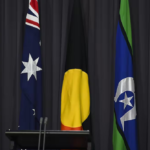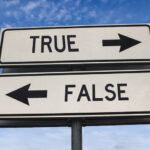The Revolution of Recycling in Australia
As Planet Ark celebrates the 18th anniversary of National Recycling Week, the environmental organisation is taking a look at the recycling revolutions happening around us. Janet Sparrow explains a number of key areas of development and how Australians can get involved beyond their home recycling bins.
Recycling is an exercise that has become second nature to Australians. It’s a good thing for both the environment and the economy, and like many other facets of modern life, like medicine and technology for example, its developments and uptake continues to grow.
Over the past decade, the recycling rate for packaging has doubled to more than 63%. But while many Australians are well aware of established initiatives like kerbside recycling, more recently introduced recycling services are less well known.
Late last year, the REDcycle Program kicked off a revolution in the recycling of soft plastics, one of the main contaminants found in household recycling. Developed and implemented by the RED Group together with Coles and some of Australia’s biggest food and grocery brands, the program allows householders to recycle a wider range of soft plastics (including plastic bags, bread and pasta bags, cling film and newspaper shrink wrap) by returning them to over 480 drop-off points at Coles supermarkets in all major cities and a number of regional centres across Australia.
Plastic bags make up 61% of the plastic recovered through the program, food and grocery packaging make up 32%, and “green” bags and miscellaneous contamination comprise around 7%. It’s a good step in the right direction, but there’s still room for improvement on the consumer end; learning what we can do without and finding alternatives to reduce consumption of these products even further.
Another area of recent revolution involves electronic waste (e-waste) disposal, with the introduction of the National Television and Computer Recycling Scheme. Following the highly successful blueprint of ‘Cartridges 4 Planet Ark’, a voluntary Extended Producer Responsibility program that has recycled over 23 million printer cartridges, manufacturers and importers of televisions and computers are now taking full responsibility for the whole life of their products.
The Scheme is gradually being rolled out across the country, with over 400 drop-off sites already established. However, 95% of Australians are not aware that manufacturers are now covering the full cost of recycling these electronic items.
In 2011-12, an estimated 29 million televisions and computers across Australia reached the end of their useful lives, with only around 10% of these recycled. Astonishingly, 95-98% of the materials in computers and televisions, including plastics, metals and glass, can be fully recycled for future use. More gold can be recovered from one tonne of computer e-waste than can be extracted from 17 tonnes of gold ore mined from the ground, so it’s logical to increase the recovery of these materials instead of sending them to landfill.
Other areas of focus that have spurred recycling revolutions recently include used batteries, food scraps and workplace waste. These three areas are part of our day-to-day lives, and there are simple actions that we can each take to make a personal contribution to the recycling revolution.
To learn more about these developments, it’s worth taking a look at Recycling Revolution, a research report commissioned for National Recycling Week 2013 that explores the seven key areas undergoing remarkable change.
To find your closest recycling service or drop off point for a range of materials including televisions, computers, mobile phones, printer cartridges and more, visit Planet Ark’s website.
Janet Sparrow is recycling programs manager at Planet Ark. She has been working in the environmental and waste management sector for the last eight years, and she currently manages Planet Ark’s suite of recycling programs and initiatives. These include the well-known ‘Cartridges 4 Planet Ark’ program, National Recycling Week, and the RecyclingNearYou and BusinessRecycling websites. With a Masters of Environmental Management, Janet has previously worked in NSW state and local government, in the university sector in the Philippines, and she is the current Vice Chair of the NSW Waste Educators Working Group.












